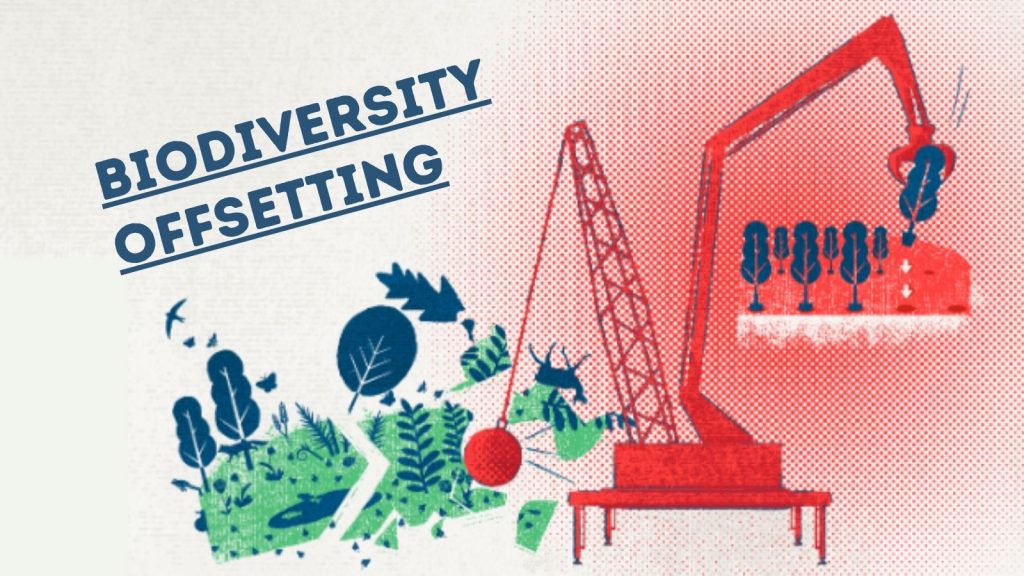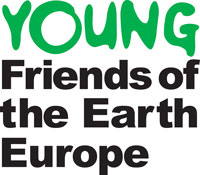In Cali, Colombia, leaders from across the globe are gathering to address the biodiversity crisis and progress on its protection at the 16th Conference of the Parties (COP16) to the Convention on Biological Diversity (CBD) – or Biodiversity COP16. Until 1 November, representatives from 196 countries will especially discuss the modalities and means of implementing the Global Biodiversity Framework (GBF). The GBF is a historic pledge signed in 2022 by 196 States, committing to take urgent action to halt and reverse biodiversity loss
While the COP16 represents a pivotal moment in international efforts to combat the escalating destruction of biodiversity, the EU will also use this stage to promote false solutions, including the push for new markets for biodiversity credits.
President of the European Commission Ursula von der Leyen already gave a speech in September, on the potential of “nature credits” to boost private investments in conservation efforts in Europe. The development of biodiversity and nature credit also plays a central role in the mission letter to the new Commissioner for the Environment.
In this article, we explain why these mechanisms are in reality a false promise that threatens communities and nature.
What are biodiversity credits?
Biodiversity credits are financial instruments putting a price on nature conservation, restoration, or sustainable management in a particular area. They are tradeable assets intended to represent ‘measurable outcomes’ – such as protecting or restoring certain species or ecosystems, or parts of them. Similar to carbon credits, they allow corporations to buy and sell these, to meet regulations or voluntary sustainability claims.
In practice, businesses generally purchase biodiversity credits for offsetting purposes: i.e. as a mean to “compensate” for the negative impacts they generate. The difference between biodiversity credits and offsetting is that the latter establishes a direct connection between the site where biodiversity is destroyed and the offset site, whereas biodiversity credits can, in theory, be generated and sold anywhere in the world.

What are the risks behind this push?
Unreliable offsets and the overestimation of nature’s capacity
Experience with carbon credits has shown that this type of mechanism is mainly used for offsetting purposes. While proponents believe in biodiversity credits’ potential to generate new funding and incentivise protection efforts, there is actually little demand for biodiversity credits, apart from for offsetting or greenwashing.
Past experiences in offsetting the destruction of biodiversity have mostly been unsuccessful. Attempts to recreate or restore ecosystems to their former state is often not feasible within reasonable time-frames, or is prohibitively costly. To date, complex ecosystems such as primary forests and peatlands have not been wholly restored anywhere, in a fully satisfactory way. Ecosystem restoration in itself can be beneficial, but only if it comes in addition to, and not instead of, curbing ecosystem destruction.
There is also simply not enough land available for the scaling up of such markets. The total amount of land already pledged for carbon removal projects (even before considering new projects for biodiversity) adds up to 1,200 million hectares worldwide. That’s almost as much land as we currently use for agriculture. There is no more land to offset carbon emissions or biodiversity loss without displacing peoples and undermining local food systems.
Human rights abuses
Offset projects can lead to conflicts over the use of land. Biodiversity credits and offsetting will likely lead to land grabbing, community displacements, increasing inequalities and human rights abuses, just as carbon offsets have. Indigenous people and local communities rely on these lands for their livelihoods, and biodiversity credits may result in their exclusion from decision-making processes, despite them being the stewards of some of the world’s most biodiverse regions.
Indigenous Peoples and local communities receive only a fraction of the already existing offset projects’ proceeds, whereas project developers and financial intermediaries receive the biggest share.
Commodification of nature
By assigning a monetary value to nature, we risk reducing complex ecosystems to mere economic assets and undermining their intrinsic value and immeasurable benefits to life on our planet.
Biodiversity offsets and credits allow private markets to price and prioritise biodiversity actions, diminishing governments’ role in biodiversity protection as a public good. Market-based biodiversity protection, driven primarily by short-term financial considerations, is highly unlikely to be consistent with scientific knowledge on species and ecosystem needs.

A distraction from real solutions
Biodiversity credits are a corporate promise misleading governments and policymakers into believing that private sector investments alone can solve environmental crises, when better ways exist to address the funding gap in biodiversity protection and avoid risky schemes. These include:
- Redirecting harmful subsidies. Harmful subsidies are estimated at around $2.6 trillion a year globally – and between €34 to 48 bn a year in the EU!
- Taxing environmentally harmful activities
The push for biodiversity credits risks justifying cuts in public funding for nature. Dedicated public funds for conservation and restoration measures are essential to restore and protect biodiversity.
It is also a distraction from traditional environmental regulation, which has proven to be a much more effective, simpler and cheaper way to address the critical destruction of biodiversity. Data shows that binding environmental legislations have an excellent track record (e.g. to stop the hole in the ozone layer, or ban particularly harmful chemicals such as asbestos). The issue is not the lack of effectiveness but the lack of strict enough regulations and poor implementation.
Turning nature into a simplistic financial asset will only allow destructive activities to continue business as usual. Political leaders must instead prioritise transformational change in tackling the underlying causes of biodiversity loss. This includes stopping and redirecting financial flows and investments that are damaging to biodiversity; enforcing effective environmental laws; and supporting community-led conservation efforts.
Read more
- Report of Friends of the Earth International and others, presented at the opening of the COP 16: https://www.foei.org/publication/biodiversity-offsetting-crediting-report/
- Friends of the Earth International’s blog on what is at stake at COP16: https://www.foei.org/cbd-cop16-what-is-at-stake/
- Statement signed by over 270 organisations and academics calls on governments, multilateral bodies, conservation organisations and other actors to stop the promotion, development and use of biodiversity offsetting and crediting schemes: https://www.biodmarketwatch.info/
- Our checklist to put false promises – including carbon offsetting and biodiversity offsetting – to the test of environmental sustainability and social justice: https://friendsoftheearth.eu/publication/how-to-navigate-greenwashing-by-corporations-governments/







